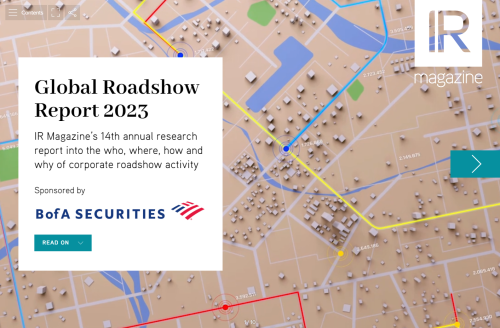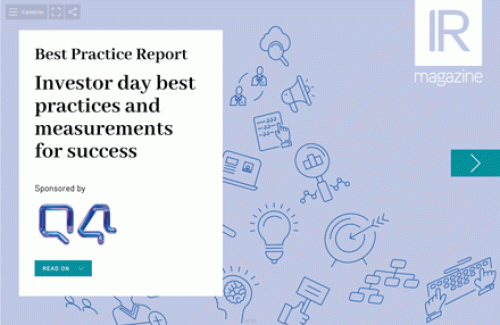Sponsored content
Mifid II may come from Europe but it has influenced investor relations all over the world, including in Asia. Increasingly, companies are finding it difficult to fill roadshow schedules and identify new investor targets in the region, says Matthew Rafter, vice president at Nasdaq IR Intelligence in Asia-Pacific.
‘When Mifid II came out in January 2018, we didn’t see an immediate impact on our client base. We saw a little impact in the second half of last year, but then we saw it really increase in the first half of 2019,’ he says.
‘We saw a marked increase in companies coming to us saying, We’re having a lot of difficulty filling meetings, we’re having difficulty with the quality of meetings. And we even had some of our largest clients in the Asia-Pacific region cancel roadshows to the US because they couldn’t fill their days.’
Mifid II forces investors to unbundle payments for research and corporate access from trading commissions. As a result, investors are spending less money on brokers’ services and attending fewer events and meetings. While the legislation applies only to the European market, some investors have chosen to adopt its rules on payments globally, helping to spread its influence.
Despite the difficulties posed by Mifid II, Asian companies are still keen to seek out new investors, especially in the US. Amid a drop in support from the sell side, the role of technology in investor targeting is becoming more important, says Rafter.
‘We’re seeing more and more companies wanting to target the US, but it is a difficult challenge,’ he says. ‘In general we are seeing a shift toward companies using technology and data to help understand the buy side and identify new investors to engage with and contact directly.’
Turning to the domestic market, Asia-Pacific issuers face a different set of challenges when trying to understand the investment landscape. The region has a patchwork of different disclosure regulations, making it a complex process for companies to get a clear picture of who owns their stock.
‘It may be hard for companies that do not have an analytics provider to get access to all of the information from an investor perspective,’ says Rafter. ‘There are thresholds that are applicable in some markets. But it’s rare, especially if you are a large or mid-cap, to see investors pass that threshold, so you would have to go through a different process of getting that information.’
The spread of data privacy regulations is further complicating the situation. ‘We see more push back now from within local markets when trying to obtain investor information,’ says Rafter. ‘Getting an understanding of who investors are, what their strategy is, who the key contacts are, whether the decisions are made in Hong Kong, Singapore or somewhere else – all of that is becoming more complex for companies to understand.’
Mifid II is just one global IR issue that is leaving its mark on the Asia-Pacific region. Issuers also need to get to grips with the growth of passive investment strategies and an increased focus on investor stewardship, continues Rafter.
‘While we see a fairly consistent influence from proxy advisors, we do see an increase in investors having their own decision-making teams,’ he says. ‘For example, BlackRock and Vanguard have built out teams and do more engagement themselves. Many of these firms are more focused on Asia as well, despite the fact that it runs the engagement through the US. We’ve definitely seen an increase in outreach from it to Asian corporates.’
All these changes are having a profound impact on the IR role in Asia. The demands placed on IR teams are growing everywhere, but this is a bigger challenge in Asia where the role is less mature, says Rafter.
‘Ten years ago, IR was more of a PR and comms role. We have seen that evolve quickly into a financial markets role,’ he explains. ‘Because that change has happened quite quickly, the expertise is having to evolve along with it and we see a fairly fast-paced shift in the type of people who are in IR. That is a challenge for companies, particularly for small or mid-caps, as they may not have the budget required to get someone of the level of expertise that is needed.’
While the IR challenges are growing for Asian companies, Rafter views the changes taking place as ultimately good news for the region’s listed companies. ‘Companies are certainly trying to be more proactive, trying to get ahead of challenges, and are involving more parts of the organization in the IR function,’ he says. ‘I think that is positive for the market here and hopefully draws more investment to the region.’
To meet this challenge and create an opportunity to differentiate your message, Rafter notes that IR teams should ensure they are investing in the right technology and data capabilities to facilitate driving their valuation and investment brand.
‘A successful IR strategy will focus on getting the right exposure within the investment community, identifying the material ESG factors affecting the business and implementing an investor engagement strategy from the Board, Executives, IR and key Stakeholders in the business. Data and analytics are key to this,’ Rafter said.










